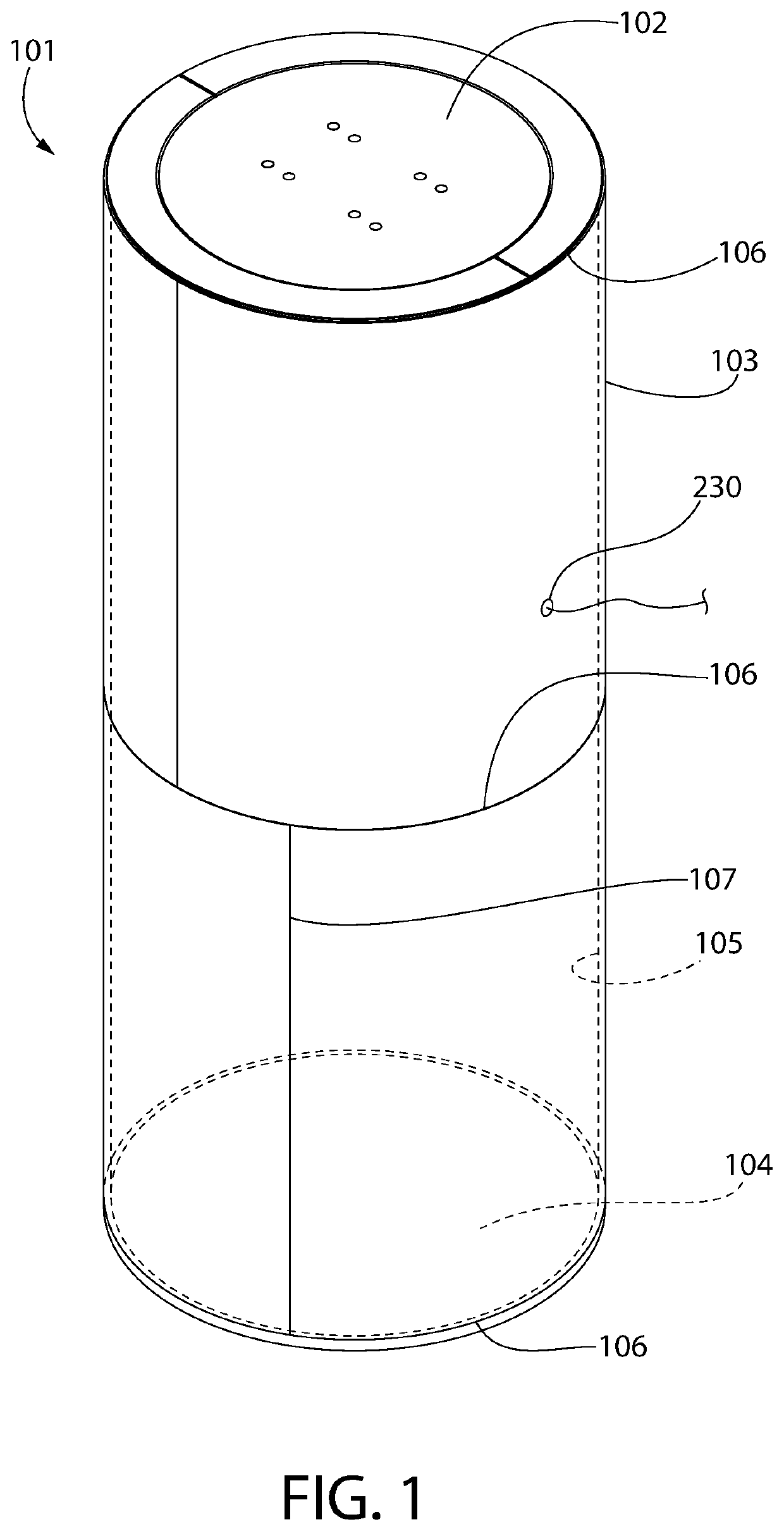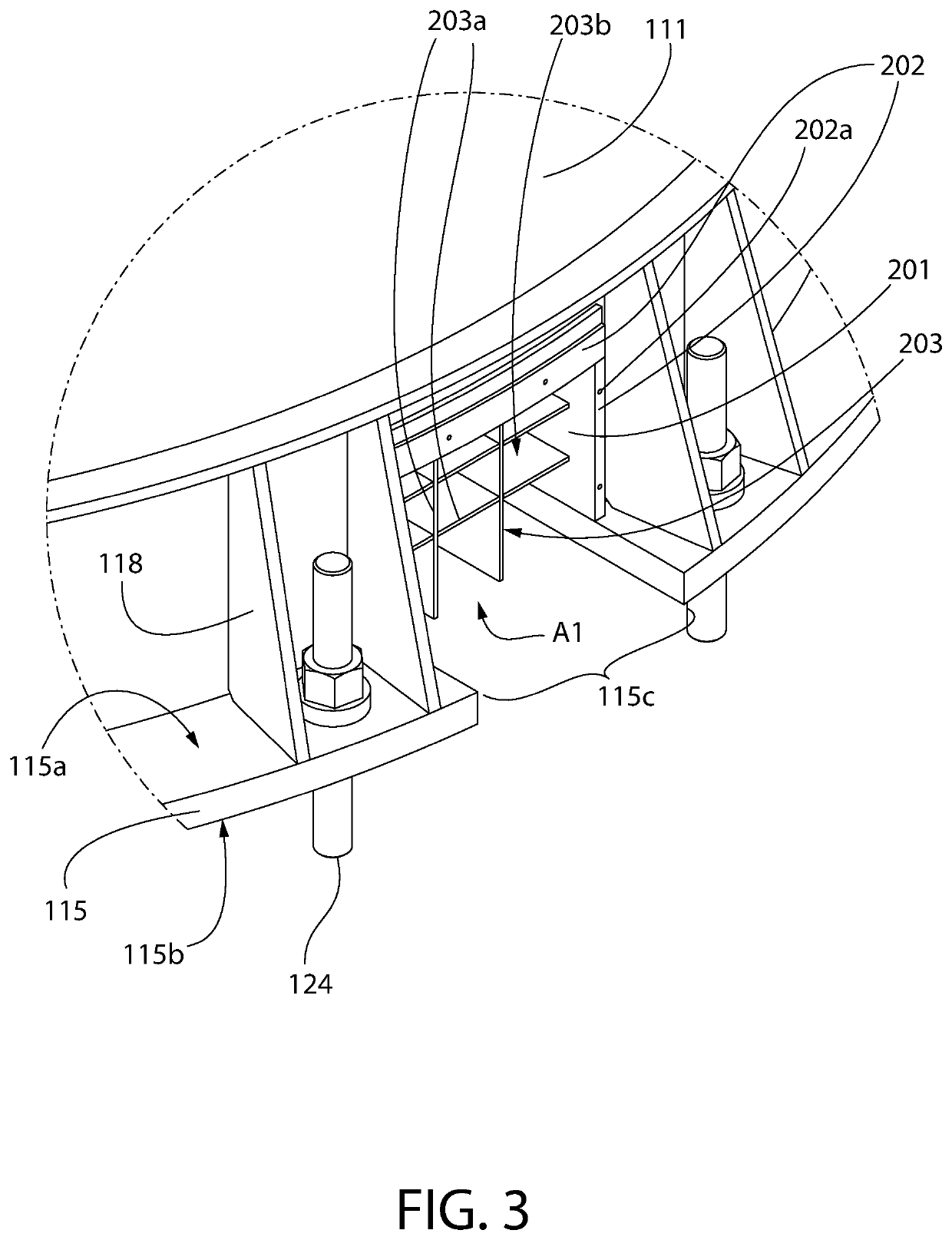Cask with ventilation control for spent nuclear fuel storage
a technology of nuclear fuel storage and cask, which is applied in the field of cask, can solve the problems of high radioactive snf in the fuel assembly still producing considerable heat which must be dissipated, stainless steel becomes vulnerable to stress corrosion cracking (scc), and on-site canister storage facilities, often called independent spent fuel storage installations (isfsis), are particularly vulnerable to scc damage, and achieves easy adjustment, increase or decrease the airflow rate, and mitigate the threat of s
- Summary
- Abstract
- Description
- Claims
- Application Information
AI Technical Summary
Benefits of technology
Problems solved by technology
Method used
Image
Examples
first embodiment
[0055]FIGS. 1-15 depict various aspects of a nuclear fuel storage system generally comprising a passively cooled and naturally ventilated outer storage module or cask 100. Cask 100 is constructed for above grade placement such as on a concrete slab. The cask has an internal cross-sectional area configured to hold only a single spent nuclear fuel (SNF) canister 101 loaded with SNF assemblies (not shown) emitting radiation and substantial amounts of decay heat.
[0056]Canister 101 is a vertically elongated and hermetically sealed (i.e. gas tight) vessel in one embodiment comprising cylindrical shell 103, bottom closure plate 104 affixed to a bottom end of the shell, and a lid coupled to a top end of the shell. The lid and bottom closure plate may be hermetically seal welded to the shell via circumferentially continuous girth seal welds 106 at the weld seams. Shell 103 may be formed one or more rolled metal plate segments 103a joined by longitudinal seal welds 107 at the weld seams. A co...
second embodiment
[0093]FIGS. 16-31 depict various aspects of a nuclear fuel storage system generally comprising a passively cooled and naturally ventilated outer storage module or cask 300. Cask 300 is constructed for partial and substantial underground / below grade placement wherein a majority of the height of the cask is located below grade and the entirety of the SNF canister 101 is below grade for radiation shielding provided by the surround embedment. Whereas above grade storage cask 100 previously described herein is heavily radiation shielded, storage cask 300 conversely is unshielded. Instead, cask 300 utilizes the surrounding at grade and below grade embedment materials such as concrete and engineered fill (e.g., compacted soil, crushed stone, masonry waste material, etc. and combinations thereof) to block and absorb the radiation emitted by the SNF inside the nuclear waste fuel canister 101. Cask 300 is compatible for use in underground nuclear waste fuel and high level waste storage system...
PUM
 Login to View More
Login to View More Abstract
Description
Claims
Application Information
 Login to View More
Login to View More - R&D
- Intellectual Property
- Life Sciences
- Materials
- Tech Scout
- Unparalleled Data Quality
- Higher Quality Content
- 60% Fewer Hallucinations
Browse by: Latest US Patents, China's latest patents, Technical Efficacy Thesaurus, Application Domain, Technology Topic, Popular Technical Reports.
© 2025 PatSnap. All rights reserved.Legal|Privacy policy|Modern Slavery Act Transparency Statement|Sitemap|About US| Contact US: help@patsnap.com



